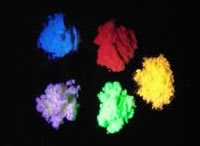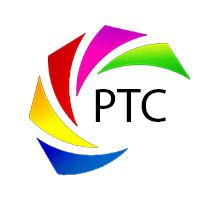What are Down-conversion Phosphors?
Down-conversion or down-converting phosphors (DCPs) are a class of luminescent materials that can absorb and convert high energy photons or particles (such as electrons) into lower energy or longer wavelength light. Due to their high conversion efficiency and quantum yields, they are the dominant form of phosphor materials in use today for lighting, imaging, and display back-lighting technologies. They also have a wide range of applications ranging from biosensors, thermometry, electroluminescence, scintillators, security, and tagging.
Down-converting Phosphors in White LED Technology
Down-conversion phosphors have been instrumental in the development of solid-state lighting and white-emitting LEDs. Most white-LED lamps on the market today employ blue LED light which is down-converted to green-yellow and red light by phosphors. The phosphor layers are either deposited on top of the LED or placed at a remote surface. The resulting color mix of blue from the LED and yellow-green-red from the phosphor is then perceived as white by the human eye. Most current white LED products use a blue (440 to 480 nm) LED device. However, some also use an ultraviolet (380 to 400 nm) or violet (400 to 440nm) LEDs as an excitation source. In all cases, various phosphor mixtures are used for the down-conversion.
Other Types of Down-converting Materials
Most down-converting phosphors tend to release the absorbed energy as light fairly quickly within few nanoseconds or microseconds. This is called the phosphor decay time. Other phosphors have slower decay times in the milliseconds to several seconds. Glow-in-the-dark or persistent phosphor materials are a class of down-conversion phosphors that can store energy for seconds, minutes, and even hours in some cases. These are generally referred to as phosphorescent materials. Photostimulable phosphors (PSPs), sometimes called storage phosphors, are yet another class of down-converting materials. PSPs can absorb and store long-term high energy or ionizing radiation (from X-rays, for example). The absorbed energy can later be released in the form of visible light (blue or violet) by stimulating the phosphor using low-energy radiation (red light, for example). This technique is used in some imaging applications such as Computed Radiography.

Examples of down-conversion phosphor powders emitting at different color wavelengths under blacklight (near-UV) excitation
